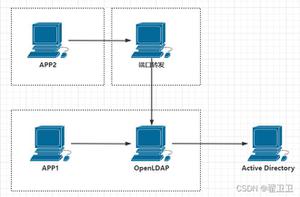Python-Tensorflow:如何保存/恢复模型?
在Tensorflow中训练模型后:
你如何保存经过训练的模型?
以后如何恢复此保存的模型?
回答:
从文档:
保存
# Create some variables.v1 = tf.get_variable("v1", shape=[3], initializer = tf.zeros_initializer)
v2 = tf.get_variable("v2", shape=[5], initializer = tf.zeros_initializer)
inc_v1 = v1.assign(v1+1)
dec_v2 = v2.assign(v2-1)
# Add an op to initialize the variables.
init_op = tf.global_variables_initializer()
# Add ops to save and restore all the variables.
saver = tf.train.Saver()
# Later, launch the model, initialize the variables, do some work, and save the
# variables to disk.
with tf.Session() as sess:
sess.run(init_op)
# Do some work with the model.
inc_v1.op.run()
dec_v2.op.run()
# Save the variables to disk.
save_path = saver.save(sess, "/tmp/model.ckpt")
print("Model saved in path: %s" % save_path)
恢复
tf.reset_default_graph()
# Create some variables.
v1 = tf.get_variable("v1", shape=[3])
v2 = tf.get_variable("v2", shape=[5])
# Add ops to save and restore all the variables.
saver = tf.train.Saver()
# Later, launch the model, use the saver to restore variables from disk, and
# do some work with the model.
with tf.Session() as sess:
# Restore variables from disk.
saver.restore(sess, "/tmp/model.ckpt")
print("Model restored.")
# Check the values of the variables
print("v1 : %s" % v1.eval())
print("v2 : %s" % v2.eval())
Tensorflow 2
这仍然是测试版,因此我建议不要使用。如果你仍然想走那条路,这里是tf.saved_model使用指南
为了完整起见,我给出了很多好答案,我将加2美分:simple_save。也是使用tf.data.DatasetAPI 的独立代码示例。
Python 3; Tensorflow 1.14import tensorflow as tf
from tensorflow.saved_model import tag_constants
with tf.Graph().as_default():
with tf.Session() as sess:
...
# Saving
inputs = {
"batch_size_placeholder": batch_size_placeholder,
"features_placeholder": features_placeholder,
"labels_placeholder": labels_placeholder,
}
outputs = {"prediction": model_output}
tf.saved_model.simple_save(
sess, 'path/to/your/location/', inputs, outputs
)
恢复:
graph = tf.Graph()with restored_graph.as_default():
with tf.Session() as sess:
tf.saved_model.loader.load(
sess,
[tag_constants.SERVING],
'path/to/your/location/',
)
batch_size_placeholder = graph.get_tensor_by_name('batch_size_placeholder:0')
features_placeholder = graph.get_tensor_by_name('features_placeholder:0')
labels_placeholder = graph.get_tensor_by_name('labels_placeholder:0')
prediction = restored_graph.get_tensor_by_name('dense/BiasAdd:0')
sess.run(prediction, feed_dict={
batch_size_placeholder: some_value,
features_placeholder: some_other_value,
labels_placeholder: another_value
})
为了演示,以下代码生成随机数据。
- 我们首先创建占位符。它们将在运行时保存数据。根据它们,我们创建
Dataset,然后创建Iterator。我们得到迭代器的生成张量,称为input_tensor,它将用作模型的输入。 - 该模型本身是
input_tensor基于:基于GRU的双向RNN,然后是密集分类器。因为为什么不。 - 损耗为
softmax_cross_entropy_with_logits,优化为Adam。经过2个时期(每个批次2个批次)后,我们使用保存了“训练”模型tf.saved_model.simple_save。如果按原样运行代码,则模型将保存在simple/当前工作目录下的文件夹中。 - 在新图形中,然后使用还原保存的模型
tf.saved_model.loader.load。我们使用捕获占位符并登录,graph.get_tensor_by_name并使用进行Iterator初始化操作graph.get_operation_by_name。 - 最后,我们对数据集中的两个批次进行推断,并检查保存和恢复的模型是否产生相同的值。他们是这样!
代码:
import osimport shutil
import numpy as np
import tensorflow as tf
from tensorflow.python.saved_model import tag_constants
def model(graph, input_tensor):
"""Create the model which consists of
a bidirectional rnn (GRU(10)) followed by a dense classifier
Args:
graph (tf.Graph): Tensors' graph
input_tensor (tf.Tensor): Tensor fed as input to the model
Returns:
tf.Tensor: the model's output layer Tensor
"""
cell = tf.nn.rnn_cell.GRUCell(10)
with graph.as_default():
((fw_outputs, bw_outputs), (fw_state, bw_state)) = tf.nn.bidirectional_dynamic_rnn(
cell_fw=cell,
cell_bw=cell,
inputs=input_tensor,
sequence_length=[10] * 32,
dtype=tf.float32,
swap_memory=True,
scope=None)
outputs = tf.concat((fw_outputs, bw_outputs), 2)
mean = tf.reduce_mean(outputs, axis=1)
dense = tf.layers.dense(mean, 5, activation=None)
return dense
def get_opt_op(graph, logits, labels_tensor):
"""Create optimization operation from model's logits and labels
Args:
graph (tf.Graph): Tensors' graph
logits (tf.Tensor): The model's output without activation
labels_tensor (tf.Tensor): Target labels
Returns:
tf.Operation: the operation performing a stem of Adam optimizer
"""
with graph.as_default():
with tf.variable_scope('loss'):
loss = tf.reduce_mean(tf.nn.softmax_cross_entropy_with_logits(
logits=logits, labels=labels_tensor, name='xent'),
name="mean-xent"
)
with tf.variable_scope('optimizer'):
opt_op = tf.train.AdamOptimizer(1e-2).minimize(loss)
return opt_op
if __name__ == '__main__':
# Set random seed for reproducibility
# and create synthetic data
np.random.seed(0)
features = np.random.randn(64, 10, 30)
labels = np.eye(5)[np.random.randint(0, 5, (64,))]
graph1 = tf.Graph()
with graph1.as_default():
# Random seed for reproducibility
tf.set_random_seed(0)
# Placeholders
batch_size_ph = tf.placeholder(tf.int64, name='batch_size_ph')
features_data_ph = tf.placeholder(tf.float32, [None, None, 30], 'features_data_ph')
labels_data_ph = tf.placeholder(tf.int32, [None, 5], 'labels_data_ph')
# Dataset
dataset = tf.data.Dataset.from_tensor_slices((features_data_ph, labels_data_ph))
dataset = dataset.batch(batch_size_ph)
iterator = tf.data.Iterator.from_structure(dataset.output_types, dataset.output_shapes)
dataset_init_op = iterator.make_initializer(dataset, name='dataset_init')
input_tensor, labels_tensor = iterator.get_next()
# Model
logits = model(graph1, input_tensor)
# Optimization
opt_op = get_opt_op(graph1, logits, labels_tensor)
with tf.Session(graph=graph1) as sess:
# Initialize variables
tf.global_variables_initializer().run(session=sess)
for epoch in range(3):
batch = 0
# Initialize dataset (could feed epochs in Dataset.repeat(epochs))
sess.run(
dataset_init_op,
feed_dict={
features_data_ph: features,
labels_data_ph: labels,
batch_size_ph: 32
})
values = []
while True:
try:
if epoch < 2:
# Training
_, value = sess.run([opt_op, logits])
print('Epoch {}, batch {} | Sample value: {}'.format(epoch, batch, value[0]))
batch += 1
else:
# Final inference
values.append(sess.run(logits))
print('Epoch {}, batch {} | Final inference | Sample value: {}'.format(epoch, batch, values[-1][0]))
batch += 1
except tf.errors.OutOfRangeError:
break
# Save model state
print('\nSaving...')
cwd = os.getcwd()
path = os.path.join(cwd, 'simple')
shutil.rmtree(path, ignore_errors=True)
inputs_dict = {
"batch_size_ph": batch_size_ph,
"features_data_ph": features_data_ph,
"labels_data_ph": labels_data_ph
}
outputs_dict = {
"logits": logits
}
tf.saved_model.simple_save(
sess, path, inputs_dict, outputs_dict
)
print('Ok')
# Restoring
graph2 = tf.Graph()
with graph2.as_default():
with tf.Session(graph=graph2) as sess:
# Restore saved values
print('\nRestoring...')
tf.saved_model.loader.load(
sess,
[tag_constants.SERVING],
path
)
print('Ok')
# Get restored placeholders
labels_data_ph = graph2.get_tensor_by_name('labels_data_ph:0')
features_data_ph = graph2.get_tensor_by_name('features_data_ph:0')
batch_size_ph = graph2.get_tensor_by_name('batch_size_ph:0')
# Get restored model output
restored_logits = graph2.get_tensor_by_name('dense/BiasAdd:0')
# Get dataset initializing operation
dataset_init_op = graph2.get_operation_by_name('dataset_init')
# Initialize restored dataset
sess.run(
dataset_init_op,
feed_dict={
features_data_ph: features,
labels_data_ph: labels,
batch_size_ph: 32
}
)
# Compute inference for both batches in dataset
restored_values = []
for i in range(2):
restored_values.append(sess.run(restored_logits))
print('Restored values: ', restored_values[i][0])
# Check if original inference and restored inference are equal
valid = all((v == rv).all() for v, rv in zip(values, restored_values))
print('\nInferences match: ', valid)
这将打印:
$ python3 save_and_restore.pyEpoch 0, batch 0 | Sample value: [-0.13851789 -0.3087595 0.12804556 0.20013677 -0.08229901]
Epoch 0, batch 1 | Sample value: [-0.00555491 -0.04339041 -0.05111827 -0.2480045 -0.00107776]
Epoch 1, batch 0 | Sample value: [-0.19321944 -0.2104792 -0.00602257 0.07465433 0.11674127]
Epoch 1, batch 1 | Sample value: [-0.05275984 0.05981954 -0.15913513 -0.3244143 0.10673307]
Epoch 2, batch 0 | Final inference | Sample value: [-0.26331693 -0.13013336 -0.12553 -0.04276478 0.2933622 ]
Epoch 2, batch 1 | Final inference | Sample value: [-0.07730117 0.11119192 -0.20817074 -0.35660955 0.16990358]
Saving...
INFO:tensorflow:Assets added to graph.
INFO:tensorflow:No assets to write.
INFO:tensorflow:SavedModel written to: b'/some/path/simple/saved_model.pb'
Ok
Restoring...
INFO:tensorflow:Restoring parameters from b'/some/path/simple/variables/variables'
Ok
Restored values: [-0.26331693 -0.13013336 -0.12553 -0.04276478 0.2933622 ]
Restored values: [-0.07730117 0.11119192 -0.20817074 -0.35660955 0.16990358]
Inferences match: True
以上是 Python-Tensorflow:如何保存/恢复模型? 的全部内容, 来源链接: utcz.com/qa/428286.html





